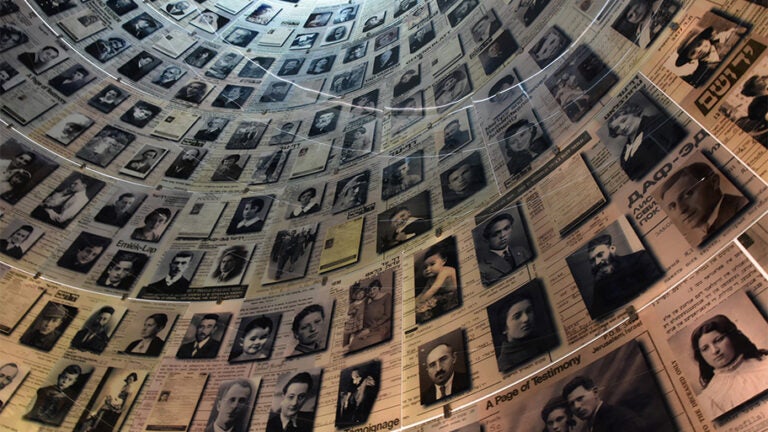
International Holocaust Remembrance Day observes a historic moment — and underlines contemporary threats
Since 2005, the United Nations General Assembly has designated Jan. 27 an annual day of commemoration to honor the 6 million Jewish victims of the Holocaust and others who died at the hands of the Nazi regime and its allies.
“Part of the purpose of this day is to think about the actions that one can take to prevent genocide, and how to intercede in a timely way,” said Stephen Smith, executive director emeritus of USC Shoah Foundation — The Institute for Visual History and Education and visiting professor of religion at the USC Dornsife College of Letters, Arts and Sciences.
Holocaust photos provide important base for discussion
The genocide was well documented, with images of concentration camps created by Nazi photographers emerging as early as 1933.
Scholars and artists use imagery to remember the trauma and bring a sense of immediacy to convey the human costs. At times, they also use the images to gain insight into the minds of perpetrators.
“If you teach human rights, the Holocaust is where you start. It’s the paradigm of what constitutes a violation of human rights,” said Alison Dundes Renteln, an expert on imagery in human rights and professor of political science, anthropology, public policy and law at USC Dornsife. “People were so shocked by its atrocities that the world wanted to create standards to prevent this from ever happening again.”
She added: “There are always images that accompany these discussions, whether it’s in teaching a class or in documentaries, there are always images of people in the camps. The impetus for disseminating these images is to try to get people angry or disgusted or to elicit some sort of emotional response so they’ll speak out or be mobilized to act.”
An atrocity that extended beyond Europe
Jessica Marglin, Ruth Ziegler Early Career Chair in Jewish Studies and associate professor of religion, law and history at USC Dornsife, notes that awareness of the broad reach of the Holocaust is on the rise.
“It’s only recently that scholars are starting to examine the extent to which the Holocaust was a global event,” she said. “At the beginning of the war, North Africa was ruled entirely by German allies. Libya was colonized by Italy. After its defeat in 1940, France became a German ally; the Vichy regime implemented strong anti-Jewish laws not only in France, but also in French-ruled territories in North Africa — including Morocco, Algeria and Tunisia. Jews in all three countries were expelled from French schools and limits were placed on their professional possibilities. In Algeria, Jews lost their French citizenship.”
Marglin notes that the Vichy regime created a network of forced-labor camps across North Africa.
“Many European Jews who had escaped to that region were captured and sent to those camps,” she said. “Although these were not death camps per se, the conditions were extreme and many died of disease and exposure.
“While Jews in North Africa did not suffer the horrifying fate of their coreligionists in Europe, we are only beginning to understand the impact of the Holocaust on Jews and Muslims in North Africa and the Middle East.”
A problem that still plagues the world
Although much time has passed since the Holocaust, the hatred that led to the genocide never seems to fully recede.
This year’s International Holocaust Remembrance Day comes just two weeks after Jewish worshippers were taken hostage at a synagogue in Colleyville, Texas. In the fall, the FBI reported the highest number of hate crimes in 12 years. Jews were targets in more than half of religious bias crimes in the U.S. in 2020, the last year for which FBI data is available.
Educators, activists and experts continue their efforts to educate and hopefully prevent further acts by providing art, imagery and testimonies that will resonate with people, evoke their empathy and a sense of moral obligation.